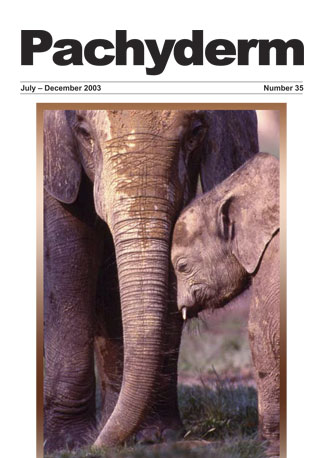Determinisme des migrations des elephants de la Foret classee du Haut-Sassandra, Cote d'Ivoire
Abstract
Discusses results stemming from October 1994-October 1996 research focused on determining the factors affecting elephant migration in the Haut-Sassandra FR in the mid western region of Ivory Coast. This region has a long wet season extending from March through to October with the heaviest rains occuring near the beginning and the end of the period, namely in April and September. The short dry season extends from November through February. Density was ascertained from observation along ground transects. Studies were done in the different areas frequented by elephants, and on the seasonal availability of food and water resources. Elephant were present in both the north and south sector of the area in the wet season, but were absent in the southern region during the dry season. They frequented the northern portion of the forest reserve year round, but were more numerous in the dry season because of the abundance of favoured fruit in this region during this time. Migration was strongly related to the presence of fruit trees left standing after lumbering or as a component of the agricultural land use practises, and the availability of small water reserves within the forest. Results suggest that elephants avoided areas with high human activity, particularly areas being logged or recently logged, or where hunting is being undertaken. (Ouattara. 2002)
Downloads
Published
How to Cite
Issue
Section
License
Copyright (c) 2003 Soulemane Ouattara

This work is licensed under a Creative Commons Attribution-NonCommercial 4.0 International License.




